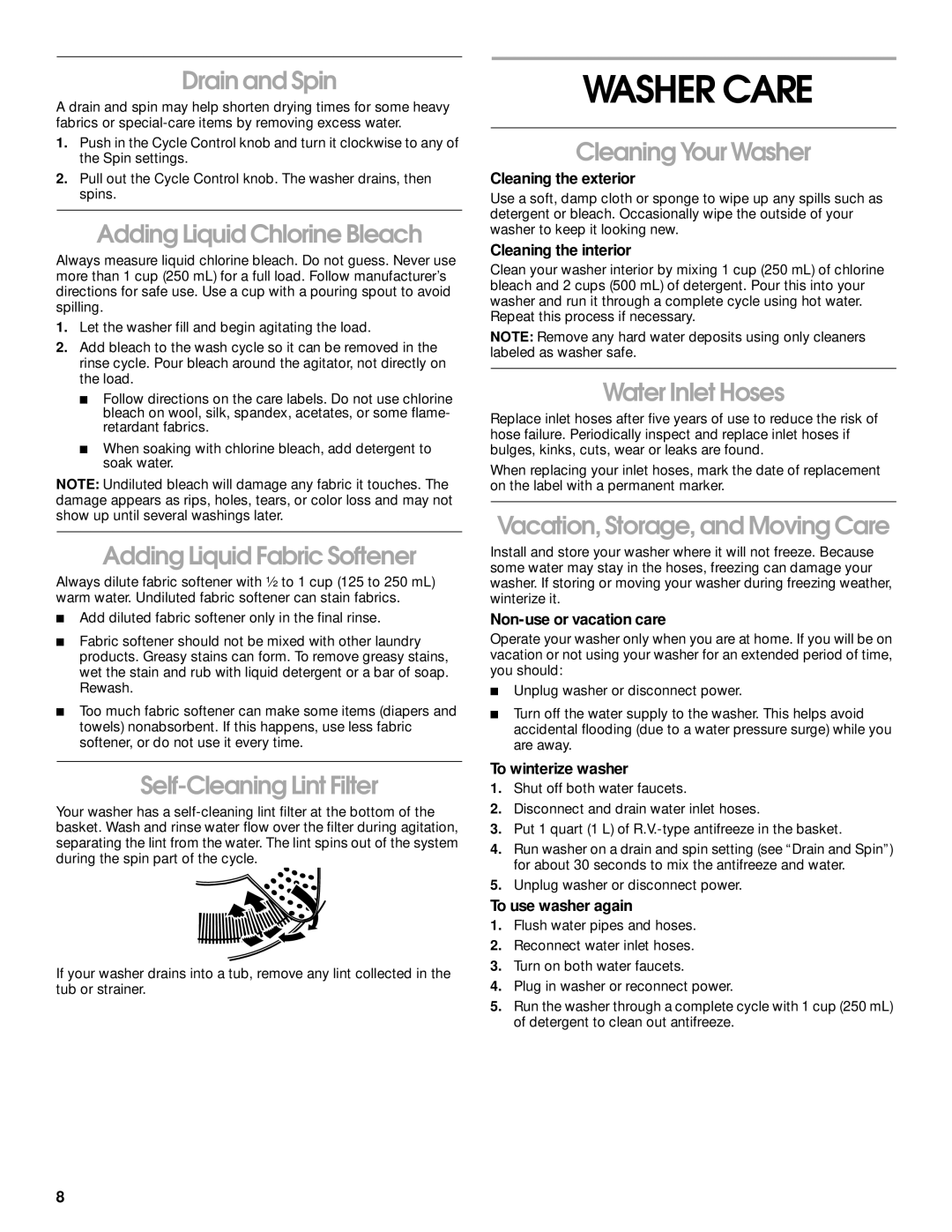3953964 specifications
The Whirlpool 3953964 is a highly sought-after appliance part designed primarily for refrigerators, gaining popularity due to its efficiency and reliability. This specific part acts as a replacement for worn-out or malfunctioning components, ensuring that your refrigerator operates at optimal levels.One of the main features of the Whirlpool 3953964 is its durability. Constructed from high-quality materials, it is engineered to withstand the rigors of daily use. This longevity helps reduce the need for frequent replacements, making it a cost-effective choice for consumers. The part is also designed to meet strict quality standards set by Whirlpool, ensuring that it will perform effectively and integrate seamlessly with a variety of refrigerator models.
In terms of technology, the Whirlpool 3953964 features advanced compatibility with different freezer and refrigerator configurations. It is designed to work efficiently within both modern and older Whirlpool refrigerator models. This adaptability allows homeowners to replace parts without needing to upgrade their entire appliance, providing flexibility and convenience.
Another important characteristic of the Whirlpool 3953964 is its ease of installation. The part is designed for straightforward replacement, often requiring no more than basic tools and minimal mechanical skills. Many users appreciate the user-friendly installation process, as it allows them to take on home repairs without the expense of hiring professional technicians.
Additionally, the Whirlpool 3953964 is an energy-efficient component that aids in maintaining optimal cooling temperatures and preserving food freshness. By efficiently regulating temperatures, it contributes to lower energy costs and a reduced carbon footprint, aligning with the growing trend of eco-friendly appliances.
Overall, the Whirlpool 3953964 stands out as an essential part for those looking to maintain the performance of their refrigerators. With durability, advanced compatibility, easy installation, and energy efficiency, it represents a smart investment for any homeowner looking to ensure their appliance runs smoothly and efficiently. Whether facing a malfunction or looking to upgrade, the Whirlpool 3953964 is a reliable choice for enhancing refrigerator performance.

